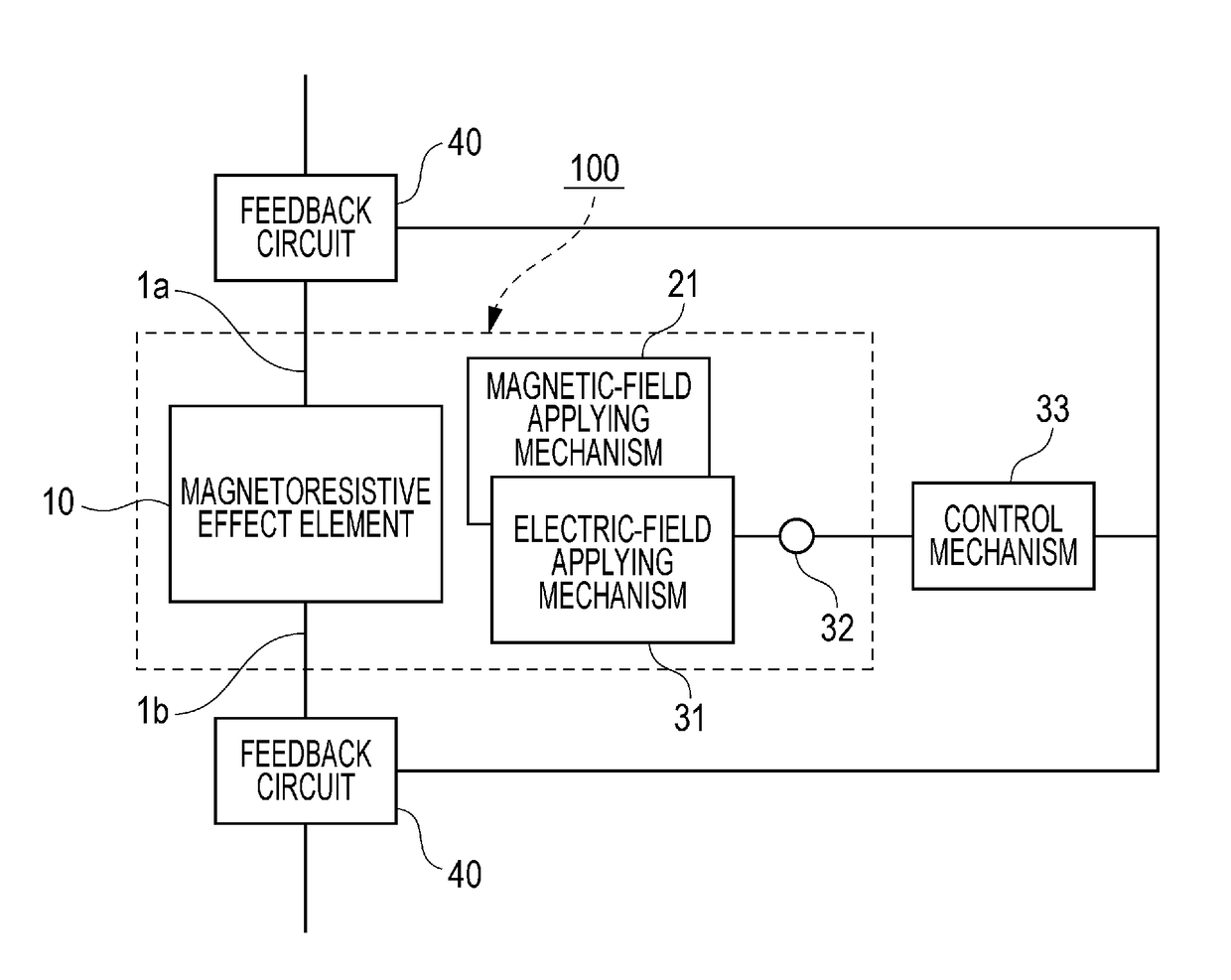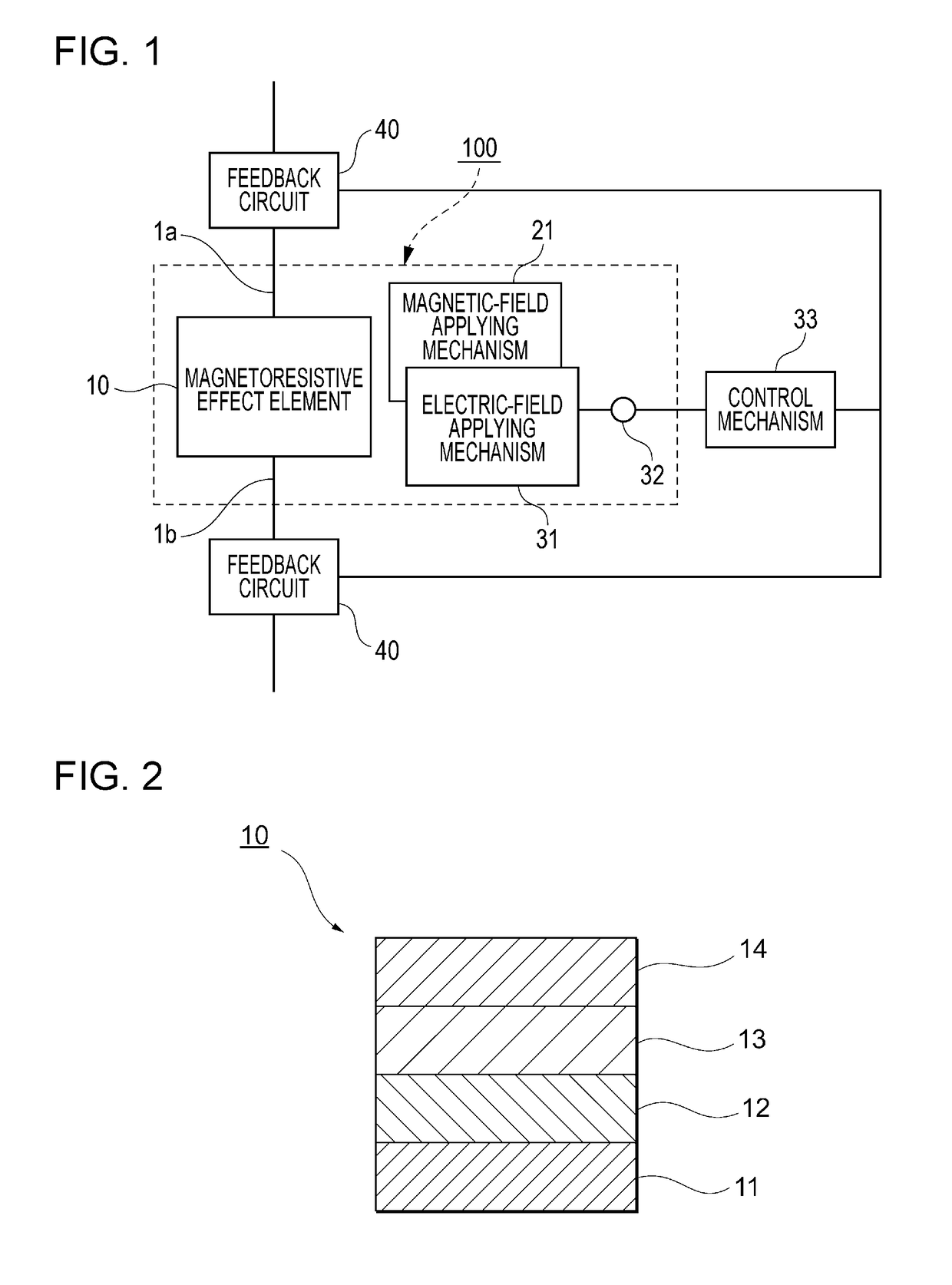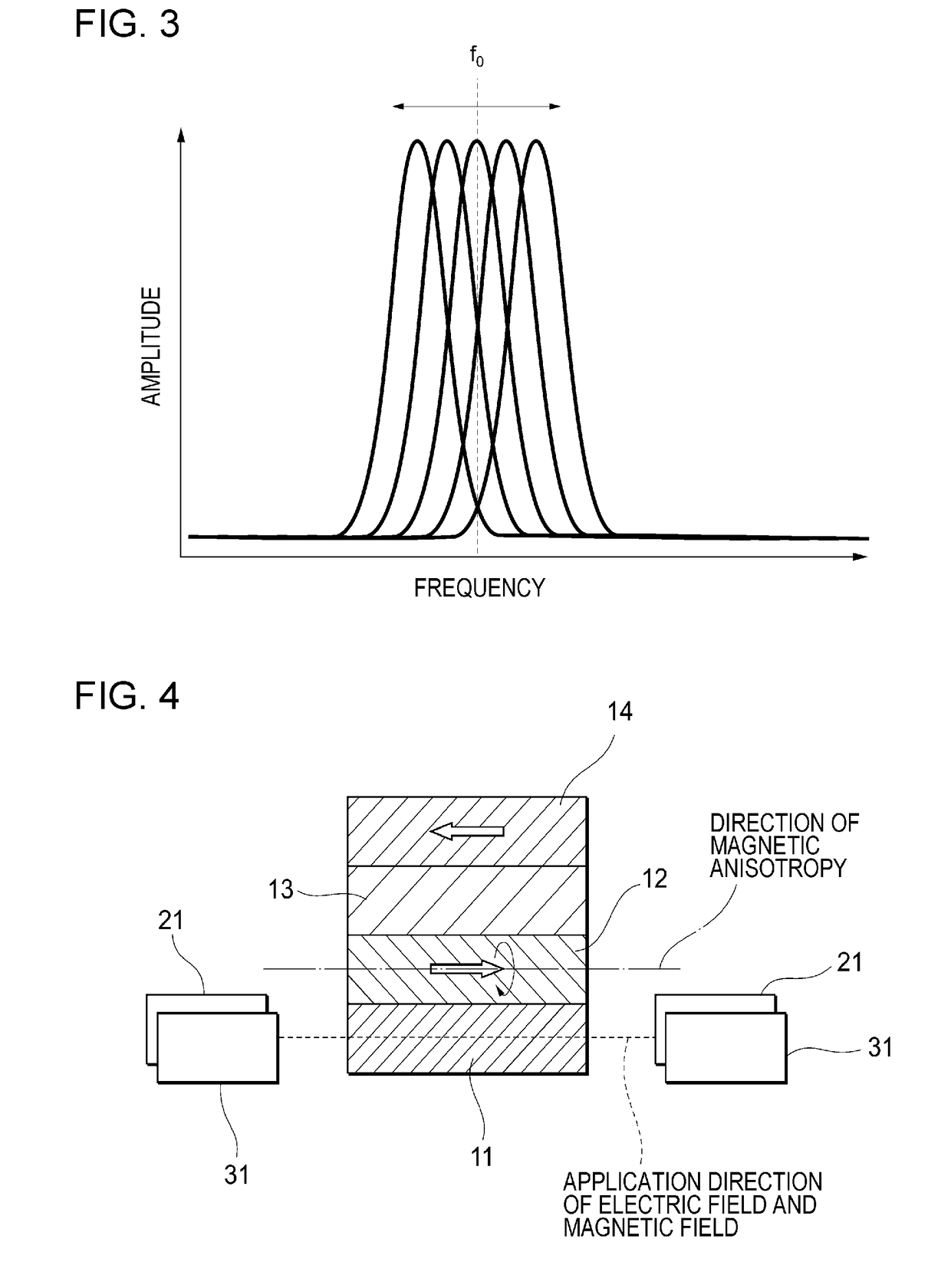Variable-frequency magnetoresistive effect element and oscillator, detector, and filter using the same
a technology of variable frequency magnetoresistive effect and element, which is applied in the direction of magnetic bodies, instruments, substrate/intermediate layer, etc., can solve the problems of increasing the operation energy of the elements and not being suitable for use in devices, so as to and reduce the energy consumption of the device
- Summary
- Abstract
- Description
- Claims
- Application Information
AI Technical Summary
Benefits of technology
Problems solved by technology
Method used
Image
Examples
first embodiment
[0058]FIG. 1 is a schematic diagram illustrating a configuration of a variable-frequency magnetoresistive effect element 100 according to a first embodiment of the present invention. The variable-frequency magnetoresistive effect element 100 includes a magnetoresistive effect element 10, a magnetic-field applying mechanism 21, an electric-field applying mechanism 31, and a control terminal 32. An input signal line 1a and an output signal line 1b are connected to the magnetoresistive effect element 10. The input signal line 1a and the output signal line 1b respectively allow an input signal and an output signal to flow therethrough. The control terminal 32 is connected to the electric-field applying mechanism 31. By applying a positive or negative voltage to the electric-field applying mechanism 31 via the control terminal 32, an electric field having a predetermined magnitude and a predetermined direction can be applied to the magnetoresistive effect element 10 via the electric-fiel...
second embodiment
[0092]FIG. 4 is a schematic diagram illustrating a positional relationship among the magnetoresistive effect element 10, the magnetic-field applying mechanism 21, and the electric-field applying mechanism 31 in accordance with a second embodiment of the present invention. The magnetoresistive effect element 10 includes the control layer 11, the magnetization free layer 12 in which the direction of magnetization is variable, the intermediate layer 13, and the magnetization fixed layer 14 in which the direction of magnetization is fixed. The magnetization fixed layer 14 is composed of a ferromagnetic material, and the magnetization direction of the magnetization fixed layer 14 is substantially fixed to one in-plane direction of the magnetization fixed layer 14. The magnetic-field applying mechanism 21 has a function of applying a magnetic field to the control layer 11 in a direction perpendicular to the stacking direction. The electric-field applying mechanism 31 has a function of app...
third embodiment
[0096]FIG. 5 is a schematic diagram illustrating a positional relationship among the magnetoresistive effect element 10, the magnetic-field applying mechanism 21, and the electric-field applying mechanism 31 in accordance with a third embodiment of the present invention. The magnetoresistive effect element 10 includes the control layer 11, the magnetization free layer 12 in which the direction of magnetization is variable, the intermediate layer 13, and the magnetization fixed layer 14 in which the direction of magnetization is fixed. The magnetization fixed layer 14 is composed of a ferromagnetic material, and the magnetization direction of the magnetization fixed layer 14 is substantially fixed to one in-plane direction of the magnetization fixed layer 14. The magnetic-field applying mechanism 21 has a function of applying a magnetic field to the control layer 11 in a direction perpendicular to an in-plane direction of the control layer 11. The electric-field applying mechanism 31...
PUM
| Property | Measurement | Unit |
|---|---|---|
| thickness | aaaaa | aaaaa |
| thickness | aaaaa | aaaaa |
| thickness | aaaaa | aaaaa |
Abstract
Description
Claims
Application Information
 Login to View More
Login to View More - R&D
- Intellectual Property
- Life Sciences
- Materials
- Tech Scout
- Unparalleled Data Quality
- Higher Quality Content
- 60% Fewer Hallucinations
Browse by: Latest US Patents, China's latest patents, Technical Efficacy Thesaurus, Application Domain, Technology Topic, Popular Technical Reports.
© 2025 PatSnap. All rights reserved.Legal|Privacy policy|Modern Slavery Act Transparency Statement|Sitemap|About US| Contact US: help@patsnap.com



